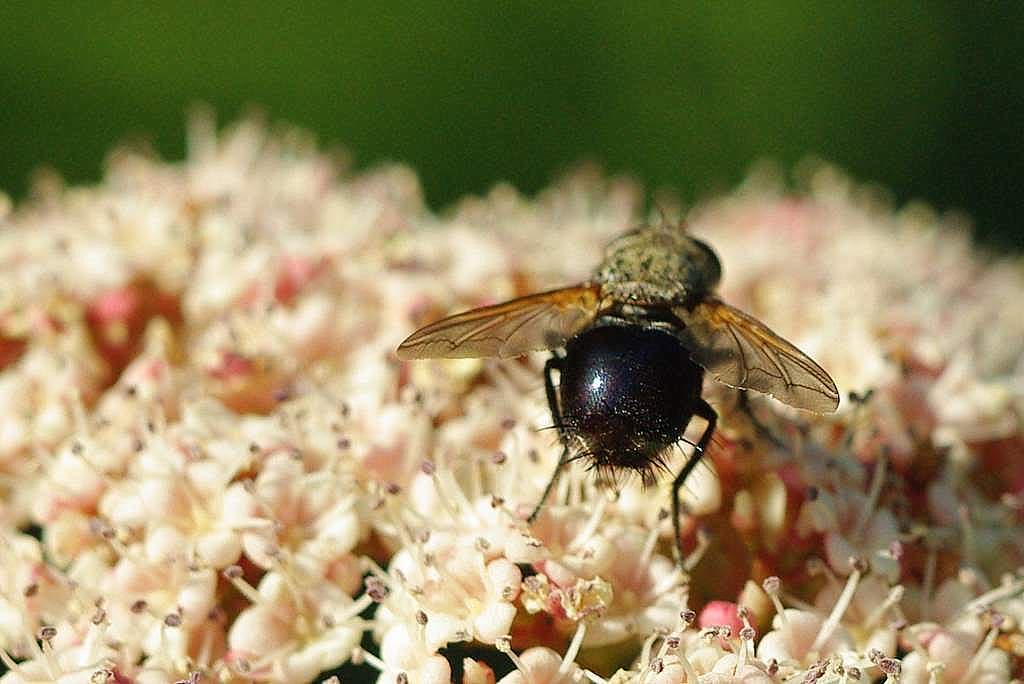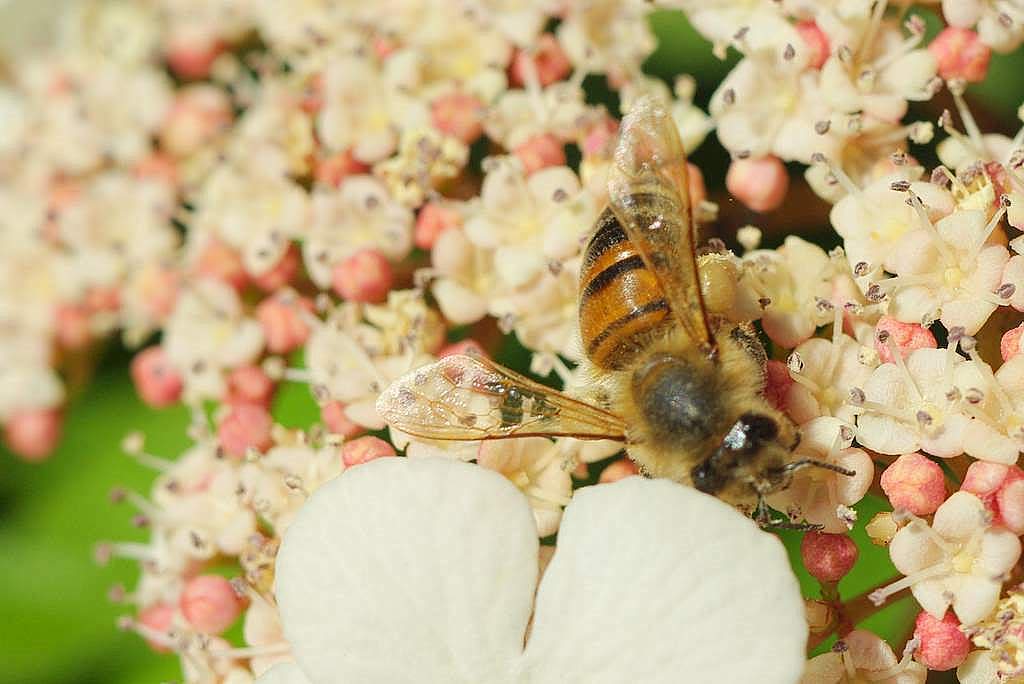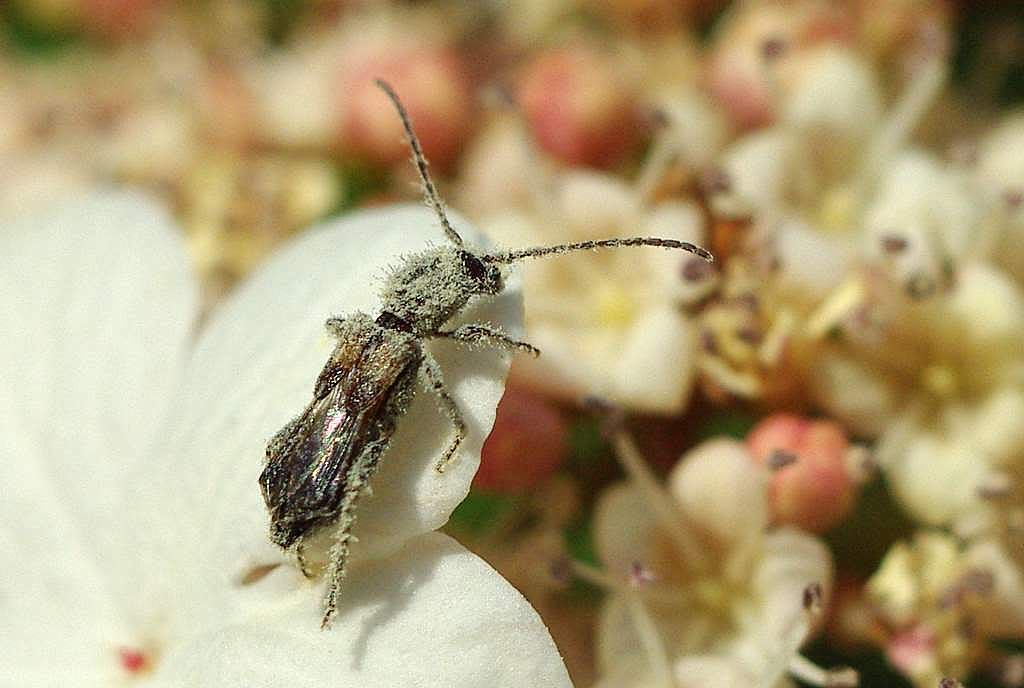A bee proves me wrong
The other day I posted photos of my Viburnum 'Onondaga', saying how much I love its blooms, but that I had never noticed pollinators on the flowers. I must never have looked before, or I was looking too early in the cold mornings, because pollinators love these flowers!
Not just honeybees either. Bees of all sizes, plus other insects. Let's take a look...
First, a helpful tip: if you have allergies or a cold, then you should probably take a decongestant before trying to photograph swarms of tiny bees with a macro lens in the warmth of the afternoon sunlight. That or learn to hold your breath. Mouth breathing created a couple of close calls with almost-inhaled bees when I was out there.
Second, watching bees in the afternoon is not relaxing, especially after they've been drinking nectar for hours. They are hyper little pollinators that will never stay still for a photo. Add a good stiff breeze to sway the flowers around unpredictably and you end up with a lot of deleted photos.
So, the pollinators. Obviously the honeybees were present -- I think I saw three or four on the shrub at a time, but it's impossible for me to know if it was the same few bees or if they were constantly flying off and being replaced by other lookalikes.
There was at least one small bumblebee:
Lots of these tiny, unidentified bees. These presented the most open-mouth danger:
A slightly larger bee, not quite honeybee sized:
It wasn't only bees that were attracted to this bounty either. Is this a type of beetle?
 |
| Get this stuff off of me! |
I'm pretty sure this next one is a beetle, tiny as it is. I really need to spend some time on bugguide.net. Maybe I'll come back and add IDs in image captions after I figure them out.
There are ants here too (no surprise really, as ants are everywhere -- at least in my garden). I don't know how much pollination they are doing, but they're definitely getting as much nectar as they want:
What's this little fly doing here? It doesn't even know where the flowers are!
This little spider too. What's he hanging around for?
Oh. Now I get it...
I was hoping to see the spider hunt succeed, but it wasn't to be -- the fly left before the spider could inch close enough to spring.
Speaking of flies, this large fly was refreshingly sedate compared to the bees:
 |
| I'm not a bee -- I can only tickle you with my hairy bottom. |
Finally, this honeybee was the most hyper of all. Not only would she scamper across the bed of tiny flowers, but she would fly up again after only a second or two. I was intrigued by her saddlebags though, and wanted to get a better look at them, so I followed here for a while:
 |
| Speaking of bottoms, mine is quite nicely dusted! |
That doesn't look like pollen on her legs. What is it? A mixture of nectar and pollen? Any apiologists or beekeepers reading, please let me know!
So all of these insects (and arachnids too I guess) have proven me wrong about my Viburnum sargentii 'Onondaga' -- it really does attract the pollinators. I'm very glad for that!
I wasn't wrong about it being a beautiful shrub though.
.























This brings back such memories of my university honours project on, wait for it... bees! I spent a lot of time watching the critters, a lot.
It's a entomological feast!
Delightful series of photographs! Wonderful stuff.
Bertie
Amazing, amazing photographs!
No takers for the saddlebags? Does look mysteriously ... grey, and gluey???